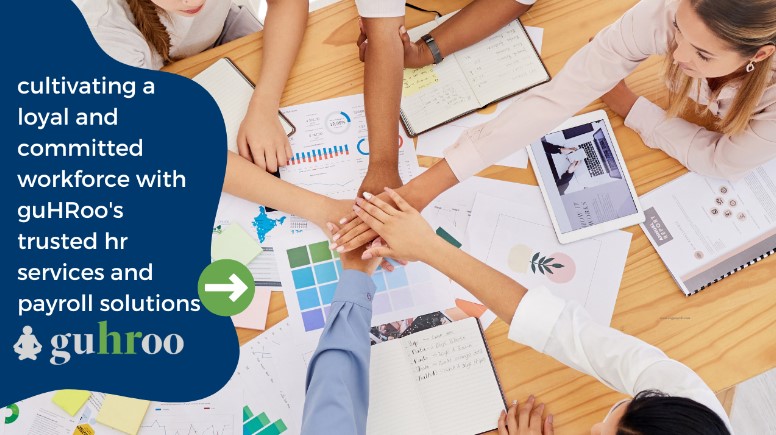Have you ever had a job you didn’t like? I have and it sucks.
What you don’t realize, is that it can impact other people when you don’t like your job.
It made my spouse crazy because she wanted me to be happy, my friends were tired of listening to me bitch, and I was miserable to people I worked with. It was not a good time. Every day, I felt like my work didn’t matter and I just wanted to get through the day. It was a waste.
What do you think would happen if you created a work environment that made just one of your teammates more excited to come to work every day? With a focus on employee engagement, how big could the ripple effect get? We will get more into that later…
Some people on your team are miserable
If only 30% of employees are engaged, that means you have more than just a few miserable people on your team.
If you don’t believe the studies showing that only 30% of people are engaged at work, close your eyes and picture 10 people from your company sitting around a table for a meeting about an important work initiative.
There will be three people on one end that can’t turn it off. They are “in it to win it” and always willing to do what it take to get the job done. There will be another few that are prepared, but are still talking about the incredible game last night. Then there will be a couple who roll their eyes at everything said who just can’t wait to get out of the meeting.
While we can all picture that situation, the fact that gets lost on employers is that the 30% of employees whom are actively engaged outperform the other 70% by over 200%.
Stop and read that again. 200%
Not to mention, when you let one of those people from the 70% go, it is going to cost you a lot of money to replace them when you look at recruiting, training and time lost.
What kind of place do you want to work at?
I am a blessed man. I have an awesome job and an awesome team around me. Collectively, we work hard to create the type of place that we want to work in. We have all had jobs we didn’t like and know how to avoid creating that type of environment.
In November of last year, we had our first annual “ERG Executive Summit.” We gathered several clients and friends together to learn from a panel of executives from “Best Places to Work” in the Carolinas. I interviewed the panel on what makes their company such a great place to work.
What we learned was fantastic and I am going to outline their answers below. These are the participants that sat on the Executive Panel:
● Tony Perricelli, Partner, Scott and Company
● Shawn Regan, CEO, Rhythmlink International
● David Dunn, CEO, VC3
● Matt Telmanik, CEO, CCS Construction Staffing
● Tom Pietras, Shareholder, Bauknight, Pietras, and Stormer
The wealth of knowledge and achievement on this panel cannot be overstated. These gentlemen represent hundreds of millions of dollars in revenue, industry awards, multiple Inc. 500 awards, and multiple Charlotte Fast 50 awards. Most importantly, they have all been voted a “Best Place to Work” in either North or South Carolina.
For the record, this was a totally self-serving act. I wanted to pick all their brains and steal their ideas, but it gets weird if I ask each of them 25 questions in a row over lunch.
A Bad Boss
How big of an impact can one bad boss make?
One of the members of the panel talked about how their company went from regularly placing in the top ten on the “Best Places” list to ranking last out of the companies selected. The became the worst of the best.
He mentioned that they were provided the data to analyze from the employee surveys and concluded that the bad surveys all stemmed from employee engagement and happiness levels in one department.
One bad boss took them from a top ten “Best Place to Work” to the worst on the list.
Vision & Mission
When I asked the panel if they were intentional about creating their culture, there was a unanimous and resounding “yes” spoken. The panelists mentioned that not only were the culture and employee engagement efforts intentional, but it was a primary focus of the leadership teams. They did this by keeping the vision and mission in the forefront for their team.
What are some of the ways they kept the vision top of mind?
Shawn Regan from Rhythmlink International mentioned that they “put the moonshot on the wall.” Their “moonshot” goal is visible to the team and reviewed every quarter along with their quarterly and annual goals.
Nearly every executive on the panel mentioned the importance of regular team meetings where progress is shared amongst the team. David Dunn from VC3 discussed how they are fully transparent with their team and this helped them in both the good and the bad times.
Hiring Practices
There were several great tips that came up when discussing hiring practices. Everyone agreed that until they had the “right people on the bus” it was not possible to be a “Best Place to Work”. Improving employee engagement started with hiring.
“When we learned how to hire, we could fire.”
-Shawn Regan
Here are a few of the tips from the panel:
● Find passive candidates: David Dunn mentioned that the key to hiring “A” players for them was finding passive candidates. They use a LinkedIn recruiting account to recruit people who weren’t necessarily looking for work.
● Ask the hard questions: Tom Pietras and David both made mention of the importance of asking the hard questions during the interview process.
● Hire slow / fire fast: Matt Telmanik talked about how they are slow to hire and quick to help move someone on to the next stage of their career if it is not a good fit. Too often people hold on to team members that are not a good fit for longer than they should. This does more harm than good for both the company and the employee.
● Make sure the culture fits: Tom Pietras talked about how their culture is not a fit for everyone. They are very careful during the hiring process to find people that are not only talented, but a good fit for the team and work environment.
● Train the entire company on how to hire: Shawn Regan shared that everyone at his company knows how to hire. He stated that once they had a good hiring process, it made everything easier because it enabled them to weed who those who did not fit with the culture.
● Onboarding is crucial: Employee onboarding should be an ongoing process, not a one-time event. Matt talked about the importance of following up with employees after 30 days to ensure they are happy and that the job aligns with their expectations.
Education & Training
Just behind a competitive wage, millennials rank excellent training and development programs as one of the most important characteristics of an attractive employer. Here is what the panel said they use to keep their education program competitive:
● Utilize outside resources: Several panel members mentioned that they used outside resources and classes to educate their team. Tony Perricilli shared that they partner with a national alliance group to get access to resources to aid in employee development.
● Provide mentor/ buddy programs: Mentor and buddy programs were not only mentioned by several of the panel members, but they are proven to help in the engagement and retention of employees.
● Put training in employees’ hands: Tom Pietras mentioned at his firm, the employee is responsible for creating their own annual learning plan. This creates ownership of the process for the team member and helps hold them accountable.
● Allow employees to teach: By giving your team members the opportunity to teach the rest of the team about skills and processes they possess, you will build confidence in the employee, bolster their knowledge, and educate your team. This is a huge win on all fronts.
● Do away with formal reviews: David Dunn mentioned that they no longer do formal performance reviews, but they do frequent 1 on 1 meetings with team members. The speed of information has made the annual review old news.
● Plan for the future: Tony mentioned that they have partners from various stages in their career, which allows the succession of the senior members of the team with focus on who will fill the chairs when someone moves on.
Compensation
Raise your hand if you’ve ever thought, you would be willing to take a pay cut to be happier in your job. You are not alone. Money isn’t the biggest motivator for more than a third of the workforce.
36% of employees would give up $5,000 a year in pay if it meant being happy/engaged in their work.
Everyone on the panel agreed that while they need to be competitive on the wage scale, they were not trying to be the highest paying organization in their field. They wanted to highlight all the other areas we are talking about to attract top talent to their company.
How do the best compensate?
Here are a few of the unique ways the best in class compensate beyond salary:
● Career planning and development: Not only do they help people to plan, but they also provide resources and compensation for gaining knowledge.
● Pay overtime to exempt employees: This policy was one that several people talked about stealing after the Summit. Tom made mention of how his firm pays salaried exempt employees overtime to reward them.
● Rich PTO policy with flexibility: Providing people with time away and making sure they take it is important in retaining talent.
● Onsite fitness facility or gym memberships: This keeps your team happy and healthy so they can be a complete person.
● Free stocked fridge and snacks: When things get stressful at work, knowing there is a fridge with goodies or some chocolate to munch on can provide a much-needed boost.
● Beer in the fridge: You know your team. Can they handle a fridge full of beer? If so, by all means offer it.
● Incentives: The panel talked through examples of times they sent the team home after a half-day for goals hit, provided team bonuses, prizes for contests, and much more. Incentives can keep morale high.
Culture – How to Improve Employee Engagement
“Culture eats strategy for breakfast.”
-Peter Drucker
As mentioned earlier, all the executives from “Best Places to Work” said the development of their culture was intentional.
Culture is not something that can be accomplished with a poster on the wall. You need to live, eat, and breathe your mission to get your team on board.
What are some of the ways these companies created a culture that people want to be a part of?
● Flexibility: This comes in a variety of forms from schedules, to working from home, to type of work assignments.
● Doing the basics very well: Matt Telmanik made an excellent point about how his team and culture is not flashy, that they just do the basics very well and consistently.
● Have substance to what you do: Shawn Regan mentioned how important it is that there is “substance” to what you do and that your team can see the impact you make.
● Give your team the tools to be successful: This applies to both hiring and doing their job.
● Treat everyone the way they want to be treated: The Golden Rule. It’s as simple as that.
● Games and incentives: We heard about all kinds of games like team trivia and sales contests. A few organizations offered onsite fitness training. Nearly everyone made note of how important it is to have fun.
A Rising Tide Lifts All Boats
So, what difference does it make if you create a better place to work? Should you care?
Think about this. What if one of your employees is miserable. He goes home at night and is miserable to his wife, who is miserable to the kids, who go to school and are mean to other kids, who go home and are mean to their parents, and on, and on it goes…
This might seem like an over-dramatization, but it’s not that far off.
Now think about what happens if you create the type of place people want to work:
● Our economy gets better
● We attract more talented people to the area
● We create more jobs
● We thrive together as a community
● We give more to people in need and create opportunities
Doesn’t that sound a lot better?
Start today. Do something simple for your team from the list above that creates a better place to work. You never know who you will impact.




